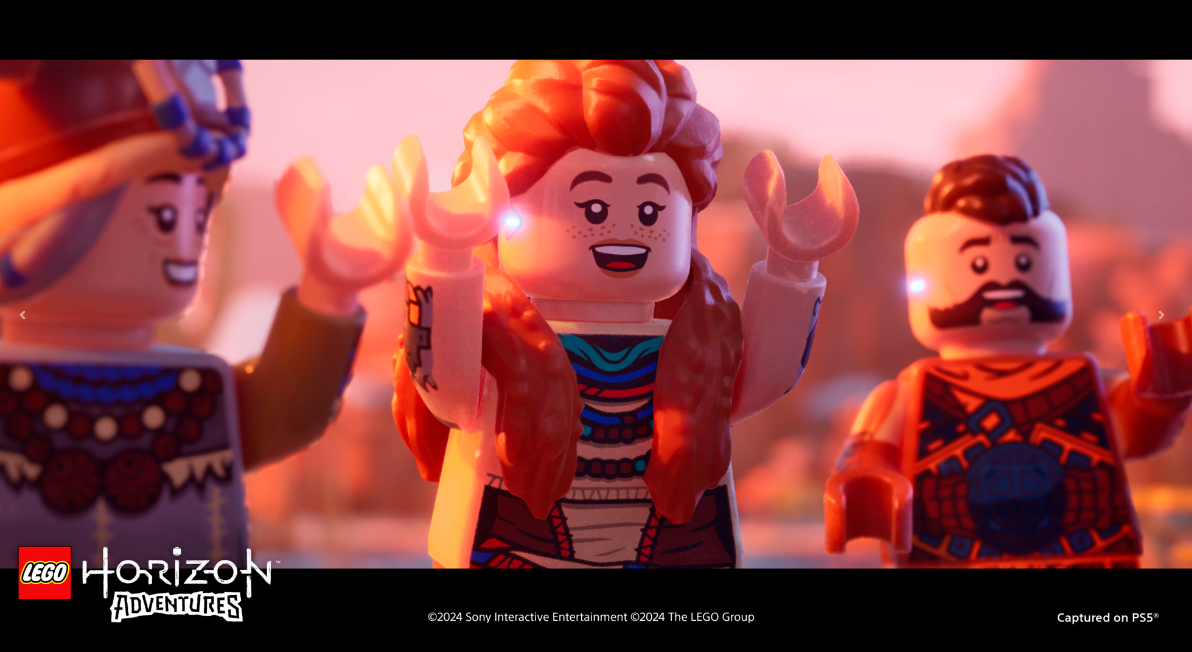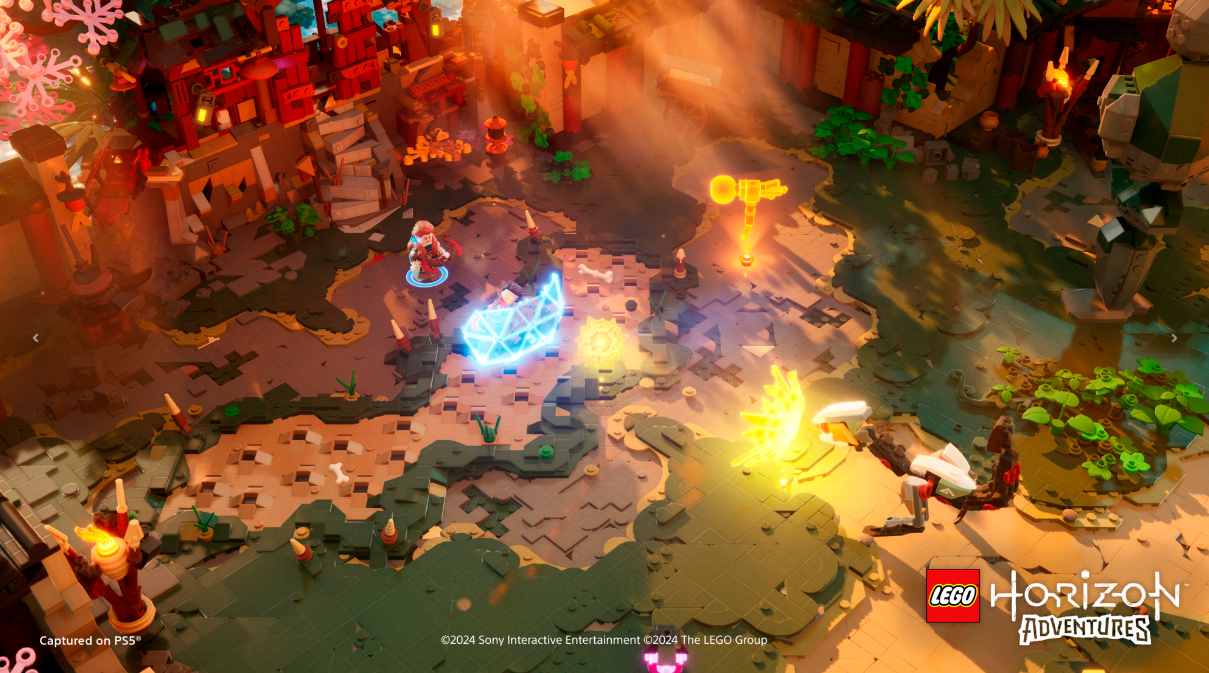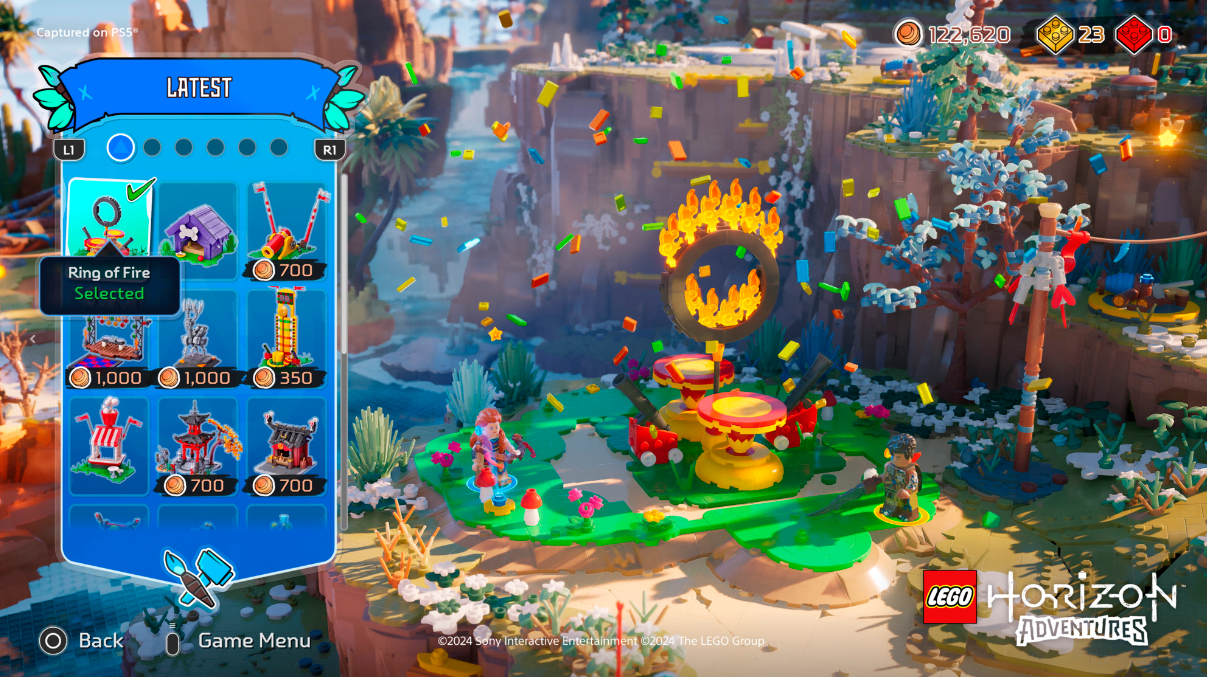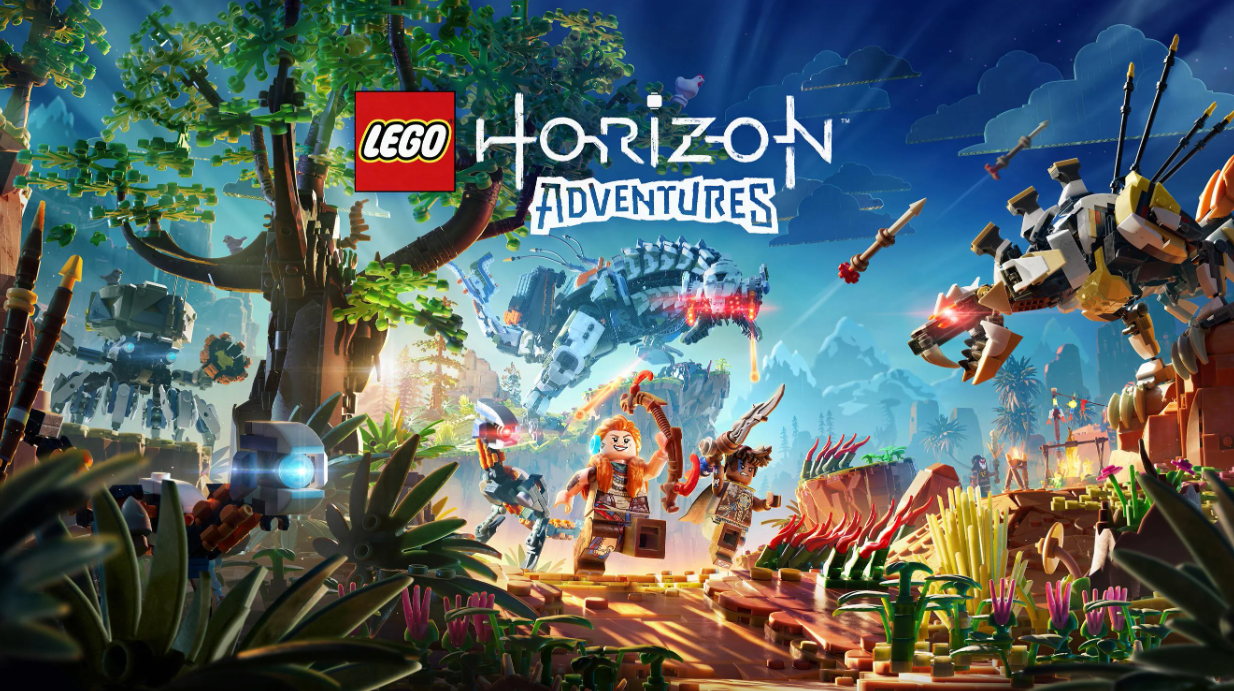After 20 years of tie-in games made mainly in one specific shape, players have been conditioned to know what to expect when they see the word Lego at the front of a game’s title. Lego Horizon Adventures, however, diverges from some of what that naming convention may conjure in one’s mind. It’s not a stark departure from the dozens of games that precede it, but Lego Horizon Adventures alters the formula in a few noticeable ways. In the process, it cleverly reinvents its universe for a new base of players, though it struggles to build on its own revised formula consistently.
Despite using a zoomed-out third-person perspective familiar to Lego game players, Lego Horizon Adventures is a far more cinematic Lego game. This might not come as much of a surprise, however, considering how PlayStation has defined its brand by chasing Hollywood for the past 15 years. Gone are several Lego-game tropes, such as unlocking dozens of characters, or replaying levels with those characters to solve previously unapproachable puzzles. In fact, you’ll hardly solve puzzles at all, save for a few very light platforming puzzles. Though you’ll collect Lego studs to spend on rewards in-game, you won’t be chasing collectibles like mini-kits or hidden items. Lego Horizon Adventures is instead a linear action-adventure game.
That has both advantages and disadvantages. On the brighter side, the game looks incredible. Lego Horizon ditches the series’ typical style of brickifying only the playable area and giving the rest of the landscape, like backgrounds and foregrounds, a more lifelike look. In this game, everything is Lego bricks. It’s somewhat subtle, but once I noticed that change, it partly helped explain how pretty it all is. By presenting a singular style, it feels like a real Lego set come to life in a way other games of this sort have never offered.
That design tweak, combined with similarly remarkable lighting to that which made Horizon Forbidden West such a visually striking PS5 title, makes this the best-looking standalone Lego game ever made. It’s on par with Epic’s Lego Fortnite in terms of dazzling visuals, which makes sense considering they’re both made in Unreal Engine 5. Colors spill out of the screen in every frame and provide an intended youthful spirit reminiscent of PlayStation’s other kid-friendly games like Astro Bot, Ratchet and Clank, and Sackboy: A Big Adventure.
Rather than retell the Horizon story in brick form, Lego Horizon acts like a reimagined version of that saga, remixing the story beats of Horizon: Zero Dawn specifically and presenting it in a kid-friendlier package that plays out like a Pixar or Dreamworks movie. The story isn’t so adult to begin with, but here, it localizes the drama a bit more. Whereas Zero Dawn is about climate change and corporate meddling on a global scale, Lego Aloy and her pals are now concerned more with their village, and some of the themes are made more approachable for kids.
Much of the original game’s cast reprise their roles in Lego Horizon Adventures, adding a sense of continuity while also altering them in ways that are rewarding for players and seem like fun for their respective actors. The series’ main faces are all here, turned into amusing caricatures, and four of them are playable before long, with all of them dishing out frequent jokes. Aloy expresses a can-do spirit that is lighter in tone than how she comes across in her typical adventures. She’s always a go-getter, but here, the stakes are purposely lowered to be less stressful or all-consuming while keeping the story adventurous and exciting for the game’s younger players.
Other characters are similarly remixed for laughs. Erend, Aloy’s close ally, becomes a rather lumbering oaf eager to help his friends, but more driven to uncover a mythical Donut Hoard, for example. Rost acts as both a character and narrator, and the game usually leans on him when it’s breaking the fourth wall, as it often does, to crack jokes about video game tropes, such as why each level’s end reward of a gold brick is needed in the first place.

If the mainline Horizon games are light RPGs, Lego Horizon is Baby’s First RPG. Each character has a lengthy skill tree, but these skills are unlocked automatically as you level up, and in an order you can’t influence. Characters do level separately, meaning you can go all in on a main character or spread your time across multiple heroes, though depending on which of the game’s several welcome difficulties you’re on, only the former strategy is viable–even for a kids game, you’ll want to gain at least several of the health buffs in a hero’s predefined skill tree.
Lego Horizon Adventures uses the traditional drop-in/drop-out co-op system of other Lego games. It even improves it in one long overdue way: online co-op, which the typical Lego games have lacked for so long, is available. Once the game’s foursome of playable heroes is unlocked, each player can be whomever they’d like, so long as they aren’t duplicates of their co-op buddy. Further promoting the lightest of RPG elements, characters play slightly differently, too. Naturally, Aloy fires arrows, while Erend smashes enemies with a hefty warhammer, for example. With this, a pair of players can cement strengths and hide weaknesses, teaching players to work as a team.
Throughout each level, you’ll find special weapons with finite uses, giving you the advantage over the hulking machines and cultists you’ll face. These weapons are consistently fun and do very well to give you a combat advantage. The Hot Dog Cart becomes a stationary mortar, lobbing explosive franks at enemies scattered across a combat area, while character-specific weapons, such as a fire bow for Aloy, call back to the mainline games and prove incredibly useful in this game, too. My favorite is a Lego brick remover, seen elsewhere as the orange tool you sometimes receive inside newly opened Lego sets. In the game, it works as a cartoonishly effective mallet, removing even the biggest enemies’ health bars by a large portion.
Lego Horizon also carries over Zero Dawn’s introduction of focus-based combat, in which you scan enemy machines for weak points, and then strike those areas for critical hits. You won’t be scrapping these animal-shaped machines for crafting parts, but in a simple manner of holding and aiming your attack button, you’ll highlight these weak spots in a way that comfortably translates the typical mechanics of the series. It’s a nice touch, and an on-screen arrow will aid younger players so they can handle it well and in short order.

Exploring the game’s 20+ levels, it’s clear similar considerations have been made elsewhere. Approaching a zipline will automatically send you sliding down it, and climbing the (yellow, of course) handholds on rock walls requires only pointing the left stick toward where you want to go next. These make levels easier to move through by demanding fewer button presses and less sizing up of a 3D space. Though some traditional platforming involving misdirected or mistimed jumps can still occur, it’s usually the case that the game’s camera and presentation work with you, not against you. I beat the game with my five-year-old daughter–admittedly, she’s been playing games for a while already, but here, she often led me through missions because they flow so naturally that she rarely needed my help outside of combat.
However, it’s also the flow of these levels that chiefly illustrates the game’s shortcomings, particularly how it ditched some traditional Lego elements that would have made missions feel more replayable and interesting. Each of the game’s levels unfolds on one of four biomes, but while they look wonderful, they largely all feel the same. You’ll move from light smash-‘em-up sections where you’re collecting studs–far fewer than usual Lego games, mind you, given how much of the world isn’t destructible–and combat zones that block you from advancing until all enemies have been defeated. Most levels end with you rescuing kidnapped villagers or destroying the polluting machinery belonging to the game’s Big Bad, and both of these outcomes are merely cutscenes after a chaotic battle sequence. As a result, it quickly becomes difficult to tell any two levels apart beyond what colors the environment may be.
Combat evolves well thanks to characters earning new skills, finding new super weapons, and the game’s always-evolving list of enemies. But the act of moving from A to B feels the same each time, and there aren’t nearly enough disruptions to this format. In the place of other Lego games’ plethora of characters with unique puzzle-solving abilities, Lego Horizon invites replayability only in the form of boss hunts–extra-hard machines that weren’t present earlier in the campaign–and a game-long side project to beautify Mother’s Heart, the village that acts as a hub world between levels.
Completing challenges and beating levels unlocks gold bricks, which open up new areas of Mother’s Heart to customize. The game’s long list of customization options includes styles faithful to Horizon’s world, like a feasting table for NPCs to gather at and eat together, as well as many silly options too, like a roller coaster, popcorn stand, and, of course, a donut shop for the village’s most pastry-obsessed warrior. The game even pulls in collections from other Lego brands like Lego City and Ninjago, allowing you to create distinct zones within the hub, or mix and match to your heart’s desire.
This aspect of the game is, in itself, a wonderful and child-like touch that promotes creativity and ownership of a play space, like hanging posters in a bedroom or displaying toys on a shelf. Many attractions, such as an obstacle course and different thrill rides, are even interactive, if only by way of a one-off animation you perform at each of them. But the hub world’s customization being tied to challenges that will largely happen post-campaign means it’s less fun, as the game then devolves into a checklist of things to do not unlike the mainline series does at times, too.

As an onboarding to the RPG genre, young players may grapple with aspects of games that will be novel to them, like skill trees, character builds, and endgame bosses, but a checklist of things to do almost feels cynical, as though it’s ingraining in its inexperienced players’ minds the idea that such busy work is foundational to the genre or medium. It doesn’t have to be, and even previous Lego games, as formulaic as they certainly are in their own ways, diversify enough from IP to IP by building their puzzles around the specific worlds and characters they portray.
Still, that only makes Lego Horizon Adventures a flawed game, not a bad one. Its story reshapes an adult plot for a younger audience seamlessly, with a strong sense of humor that kids will adore. Like a lot of content aimed at families, my strongest sense of joy is found not in how I experience Lego Horizon but in watching my kids become immersed in it. Levels often feel repetitive, but combat is exciting and tactical enough to teach depth and ask players to consider their approach, even as Aloy may be dressed up like a corn cob, a firefighter, or a pug. It’s that blend of child-like style and mechanical substance that makes Lego Horizon Adventures a lovely game to play for parent and child pairings, though it’s also just neat to see these usually self-serious characters put through a washing machine loaded with crayons.
